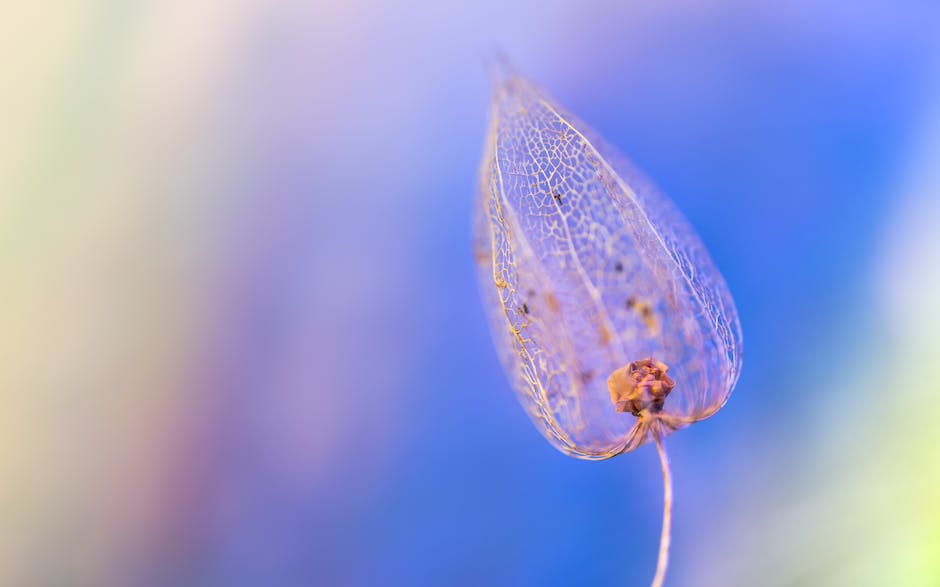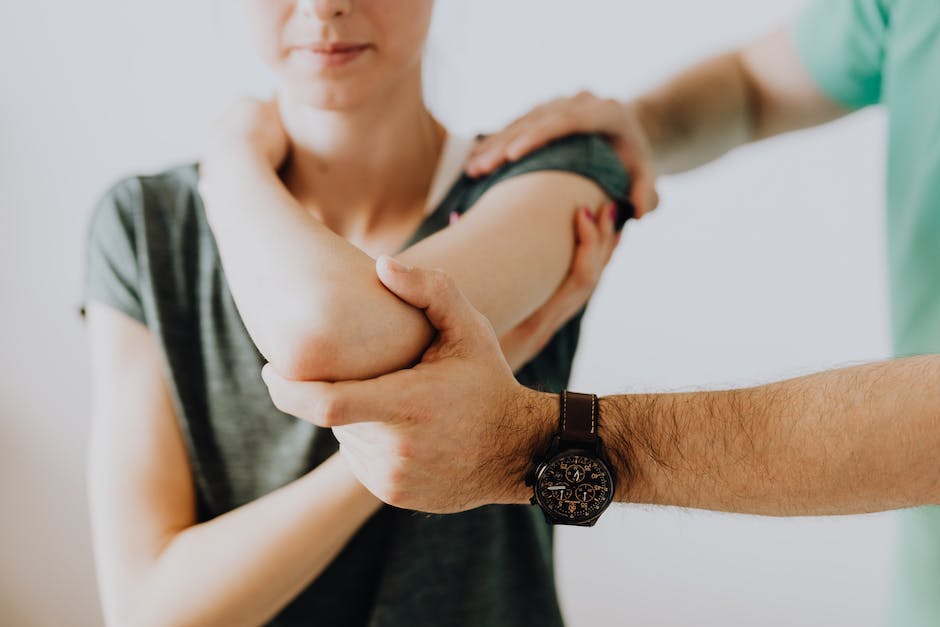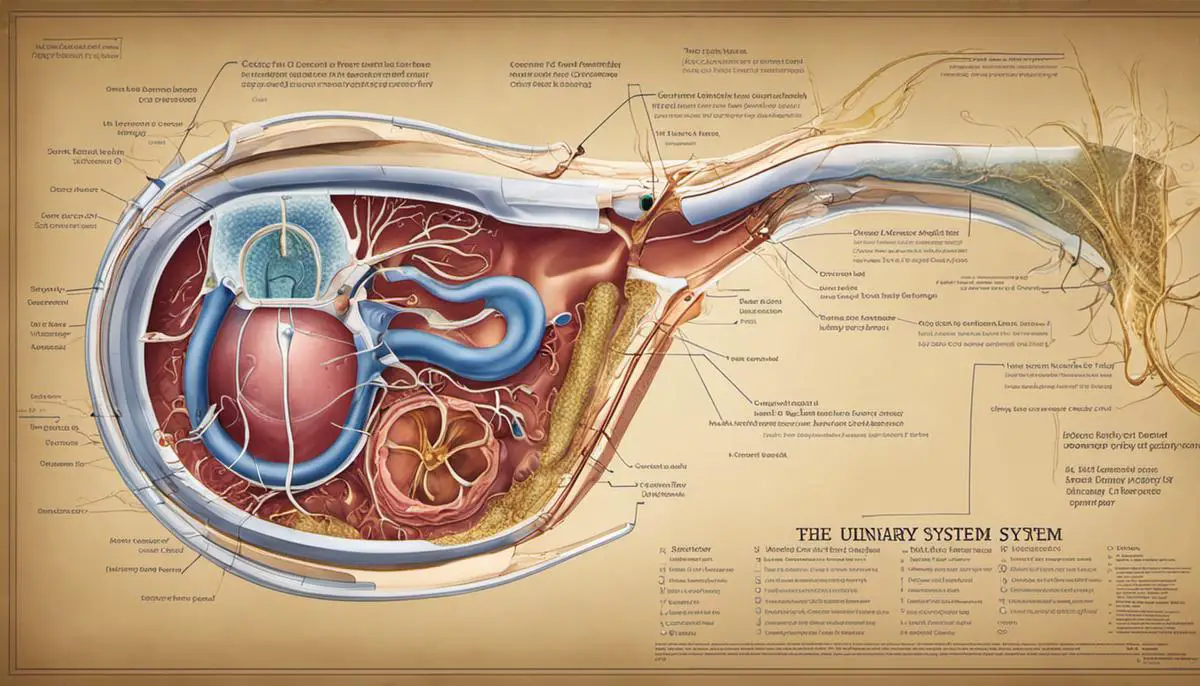Interstitial Cystitis (IC), a chronic and often challenging condition to manage, affects millions of individuals worldwide, diminishing their quality of life significantly. This persistent bladder disorder is distinguished by a combination of discomfort in the bladder and pelvic region, variable symptoms that can range from mild irritation to severe pain, and a recurrent urge to urinate. A correct understanding of the condition’s causes, symptoms, and diagnosis, as well as the available treatment options, can provide informed ways to manage this condition effectively. This informative guide aims to empower both IC patients and the general public by providing insights into this complex condition, contributing to a more empathetic understanding of the challenges faced by individuals with Interstitial Cystitis.
Understanding Interstitial Cystitis
Understanding Interstitial Cystitis
Interstitial cystitis, also known as painful bladder syndrome, is a chronic condition causing bladder pain and pressure, ranging from mild discomfort to intense pain. Patients often describe the discomfort as a feeling of constant bladder fullness, mirrored with frequent urination.
One of the primary and confusing aspects of this disease is that its causes remain unknown. However, underlying factors that contribute to the development of interstitial cystitis include abnormalities in the bladder lining, an autoimmune response, substance in the urine that damages the bladder, or conditions affecting the pelvic nerves regulating bladder sensations.
The prevalence of interstitial cystitis is widespread and the disease is especially more predominant among women. Reports show that up to 12% of women may have early symptoms of IC, but actual numbers may be higher due to misdiagnosis. Men can contract the disease too, but the registered cases are fewer.
Impact on Patients
Interstitial Cystitis can adversely affect the quality of life of an individual. The disease may impact both physical and mental health. The persistent discomfort and urinary frequency can disrupt sleep, work, routine activities, and sexual intimacy. Moreover, the unpredictable nature of flare-ups can cause anxiety and stress in patients.
Managing Symptoms
Relieving symptoms is the primary focus when handling interstitial cystitis, as the root cause isn’t clearly known and differs from one patient to another. Hence, methods of treatment are specifically tailored to each person’s unique situation.
The initial course of action is often dietary adjustments to exclude potential IC triggers such as alcohol, caffeine, spicy foods, and citrus fruits. Regular hydration, bladder-emptying, and monitoring of urine output may also lessen discomfort.
Physical therapy can be useful, specifically tailored pelvic floor exercises. These can be particularly beneficial to those where pelvic floor muscle dysfunction accompanies IC symptoms. Utilizing these methods can assist in relaxing your pelvic muscles and may lead to a reduction in pelvic pain.
The severity and type of symptoms will dictate which medications are necessary. Over-the-counter nonsteroidal anti-inflammatory drugs (NSAIDs) such as ibuprofen may be useful for more mild pain, whereas more severe cases may require stronger pain medications. Chronic nerve pain management may involve antidepressants. Additionally, there are certain oral medications that could help restore defects in the bladder lining.
In extreme cases, surgical procedures may be considered. This could include anything from nerve stimulation operations to more intrusive surgeries such as bladder augmentation or removal.
Given the complexities involved in managing IC’s symptoms, open and clear conversation between patients and healthcare providers is key to developing a tailored treatment plan that best fits the patient’s needs. Continued research into interstitial cystitis brings hope for more effective symptom management methods for this complex condition.

Symptoms of Interstitial Cystitis
Interstitial Cystitis Symptoms
Commonly referred to as painful bladder syndrome, Interstitial Cystitis (IC) is a long-term condition. It causes discomfort in the form of bladder pressure and pain, and at times, pelvic pain. This pain can range from being a mild annoyance to being severely discomforting. A persistent need to urinate may exist despite only being able to pass a small amount each time. IC has periods of heightened symptoms and remissions. The condition can potentially disrupt quality of life by interfering with work schedules, sleeping habits, and routine activities.
Some common symptoms associated with IC include:
- Chronic pelvic pain
- A persistent, urgent need to urinate
- Frequent urination, often of small amounts, throughout the day and night
- Pain or discomfort while the bladder fills that relieves after urinating
- Pain during sexual intercourse.
It’s important to understand the degree to which these symptoms can vary among individuals. Some may feel mild discomfort, urgency, and pressure below the belly button. For others, these symptoms may magnify to severe levels, significantly hindering day-to-day life activities.
When to Seek Medical Attention
Patients often mistake the early signs of IC for a urinary tract infection because of the painful and frequent urination. If you feel a constant need to urinate or experience continuous discomfort or pain in your pelvis or between the anus and vagina or anus and scrotum, seeking medical attention can lead to an early diagnosis; the earlier the diagnosis, the better the chances for managing symptoms.
Managing Symptoms of Interstitial Cystitis
Interstitial Cystitis (IC) is a chronic condition without a definitive cure, so symptom management is key. There are various ways to alleviate and control IC’s effects, such as:
- Physical Therapy: By working with a specialized physical therapist, you can learn pelvic floor exercises and bladder retraining techniques that help reduce symptoms.
- Medication: A range of oral medications, including pain relievers, antispasmodics, anti-inflammatory drugs, and antihistamines, can keep IC symptoms at bay. Before starting any new medication, always consult your doctor or pharmacist.
- Stress Management: Given that stress may provoke IC symptoms, maintaining good mental health and stress management is critical. This can involve regular exercise, plenty of sleep, and a nutritious diet.
- Bladder Instillations: For some patients, medication directly instilled into the bladder via a catheter can alleviate the frequent urination and pain that accompany IC.
As each individual’s experience with IC is unique, it may take time to discover the most effective treatment combinations. Be patient, and keep open lines of communication with your healthcare provider to navigate your way to successful IC management effectively.

Diagnosis of Interstitial Cystitis
Diagnostic Procedures and Tests for Interstitial Cystitis
The path to diagnosing IC involves a series of procedures and tests, since this condition’s symptoms closely resemble those of other common urologic and gynecologic conditions, such as urinary tract infections, bladder cancer, and endometriosis. With the cause of IC still a mystery, its diagnosis can be complex and challenging.
The diagnostic process often starts with an assessment of the patient’s history, including the nature and intensity of pain, frequency of urination, and other symptoms. A physical examination may follow, featuring a pelvic exam for female patients, and a prostate exam for males. Urine tests are conducted to rule out other conditions like UTIs or bladder cancer, with additional methods like bladder diaries, cystoscopies, and biopsies potentially involved.
Using a Bladder Diary
A bladder diary is also helpful where the patient records fluid intake, urination frequency, and pain symptoms. This data can help the doctor understand patterns and make a more accurate diagnosis. It’s a simple yet powerful tool to capture real-time data.
Cystoscopy and Biopsies in IC Diagnosis
Further, a cystoscopy may be performed which allows the doctor to see the inside of the bladder and urethra. This out-patient procedure is done under anesthesia and can show inflammation, ulcers, or other abnormalities on the bladder wall. In some cases, a biopsy might be taken during a cystoscopy to be tested for bladder cancer or other diseases.
Symptoms Management of Interstitial Cystitis
Following the diagnosis, managing symptoms of interstitial cystitis becomes crucial. Treatment options primarily target symptom relief as there’s no definitive cure for IC. Lifestyle changes, physical therapy, medications, nerve stimulation, bladder instillations, and rarely, surgery are different ways to manage IC symptoms.
Lifestyle Changes and Physical Therapy
Lifestyle adjustments like dietary changes can make a big difference. Many IC patients find their symptoms are aggravated by certain foods or drinks. A low-acid diet, avoiding spicy foods, alcohol, and caffeine can help alleviate symptoms.
Physical therapy can also be beneficial, particularly for women who have associated pelvic floor dysfunction. Therapy can train you on how to relax your pelvic muscles, which can help relieve pain and decrease urinary frequency.
Medications for Symptom Management
Prescribed medications include pain-relievers, tricyclic antidepressants, antihistamines, and pentosan polysulfate sodium which helps to protect the bladder wall. Each medication has possible side effects and should be used with caution.
Bladder Instillations and Surgery
If oral medications are ineffective, bladder instillations might be considered. During these treatments, a solution is inserted into the bladder via a catheter to ease symptoms.
In more severe cases when all other treatments have failed, surgery might be considered. However, these cases are rare and surgery for IC is considered a last resort due to the risks involved.
Navigating through the symptoms of interstitial cystitis can be demanding. This is mainly due to its persistent nature and inexplicit cause. However, by crafting a personalized treatment procedure, living a normal and healthy life is achievable for many IC patients.

Standard and Emerging Treatments
Conventional Interstitial Cystitis Treatment Methods
Interstitial cystitis, also commonly referred to as painful bladder syndrome, is an enduring condition characterized by discomfort or pain in the bladder and the adjacent pelvic region. Treatment methods differ from one patient to another, primarily based on the distinct symptoms experienced.
Oral medications are generally the primary course of treatment aimed at managing the symptoms of interstitial cystitis. Pentosan polysulfate sodium (Elmiron), specifically approved by the Food and Drug Administration (FDA) for the treatment of interstitial cystitis, is often used. Its function lies in safeguarding the bladder wall from potential irritants. Keep in mind, though, it might take up to half a year to alleviate pain and the frequency of urination.
Additionally, other medication types like nonsteroidal anti-inflammatory drugs (NSAIDs) are used to alleviate pain, tricyclic antidepressants to ease the bladder and hinder pain, and antihistamines to regulate the urgency and frequency of urination.
Physical Therapy and Diet Adjustments
Physical therapy may also be recommended to manage interstitial cystitis symptoms. Therapists can provide techniques aimed at relaxing pelvic muscles and reducing pelvic pain.
Dietary changes can significantly impact symptom control. Certain foods and drinks, such as spicy foods, caffeinated beverages, and alcohol, are known bladder irritants that people with interstitial cystitis may wish to avoid. Hydration and dietary fiber are both important to prevent constipation, which can exacerbate interstitial cystitis symptoms.
Interventions and Surgical Options
Interventions involving the bladder directly, such as bladder instillations, are sometimes used. This involves filling the bladder with a solution that often includes a steroid, an anesthetic, and a bladder protectant to help soothe and repair the bladder lining.
For severe and unresponsive cases of interstitial cystitis, surgical procedures may be considered. Transcutaneous electrical nerve stimulation (TENS) uses an external device to send electrical impulses into the body, which can increase blood flow and stimulate the bladder, reducing urinary urgency.
Invasive surgical procedures, like cystoplasty, are considered only when all other therapies are ineffective. Cystoplasty aims to increase bladder size, reducing symptoms; however, it involves significant risks and complications, including infection and bowel dysfunction.
Emerging Treatments: Ongoing Research
New treatments for interstitial cystitis are under investigation. Botulinum toxin (Botox) injections into the bladder wall are showing promise in trials. These injections may help to relax the bladder, reduce urinary urgency, and pain.
Preliminary research is also exploring nerve stimulation techniques, as well as the use of medications typically applied to other fields. These include the immunosuppressant drug Cyclosporine A, and medicines developed for nerve pain, such as gabapentin and pregabalin.
Stem cell therapy also represents an exciting frontier in interstitial cystitis treatment research with the promise of regenerating damaged bladder tissues. However, this approach is still in the early stages of investigation.
It’s crucial to recognize that the efficacy of various treatments can fluctuate widely. Some individuals may enjoy significant relief, while for others, the improvements may be scant. For this reason, personal symptom tracking and modifications in treatment protocol may be necessary to tailor the strategy to each individual’s unique circumstance.

Living and Coping with Interstitial Cystitis
Getting Acquainted with Interstitial Cystitis: A Long-Term Malady
Interstitial Cystitis, also referred to as painful bladder syndrome, is a long-lasting condition characterized by a continuous sensation of bladder pressure, discomfort, and occasionally, pelvic pain. The symptoms exhibit variability among individuals, but they are generally coupled with a constant urge to urinate and numerous restroom visits. Regrettably, there is no concrete remedy for interstitial cystitis, thus making managing these symptoms and adopting lifestyle changes of paramount importance for those enduring this ailment.
Strategies For Managing the Symptoms
The foundation of symptom management for interstitial cystitis revolves around dietary adjustments, bladder training, physical therapy, and medication. Particular triggers, such as alcohol, caffeine, spicy foods, and artificial sweeteners, exacerbate symptoms for some individuals, hence keeping a food diary helps to pinpoint these triggers and remove or reduce them from the diet. Bladder training involves timed voiding, gradually lengthening the time between bathroom visits. Physical therapy, particularly pelvic floor therapy, can alleviate some symptoms, and prescribed medicines can address both pain and bladder urgency.
Lifestyle Changes and Stress Management
Stress can intensify interstitial cystitis symptoms. Regular physical activity, such as walking or doing light housework, can help decrease stress and maintain mobility. In addition to exercise, other methods of stress management include deep-breathing exercises, meditation, and other relaxation techniques.
A good night’s sleep is essential for overall health and coping with chronic illnesses. Hence, implementing sleep hygiene techniques, such as going to bed at the same time each night, limiting naps, and maintaining a comfortable sleep environment, can mitigate during-the-night bathroom visits and increase sleep quality.
Support Networks and Mental Health Considerations
Dealing with a chronic condition like interstitial cystitis can take an emotional toll, provoking feelings of frustration,sadness, and anxiety. Connecting with others who are experiencing similar struggles can provide emotional support, encouragement, and practical advice. Online forums, social media groups, and in-person support groups can serve as vital resources for this connection.
Professional mental health services can also be beneficial. Therapies such as cognitive-behavioral therapy help individuals develop coping strategies and improve their reaction to stress, which can, in turn, alleviate physical symptoms.
Resources and Improvement of Life Quality
The Interstitial Cystitis Association and the American Urological Association provide resources and information for patients, including advice on finding healthcare providers who specialize in treating this condition, tools for tracking symptoms and triggers, and the latest research developments.
Despite the physical and emotional challenges posed by interstitial cystitis, most individuals can maintain a good quality of life through effective symptom management, lifestyle adaptations, proper mental health care, and the support of both healthcare professionals and peers.

Interstitial Cystitis, while indeed a challenging condition, is not an insurmountable barrier to leading a fulfilling life. Accurate knowledge, proper medical attention, and a proactive approach toward symptom management can help mitigate its impacts significantly. Highlighting essential lifestyle modifications, effective stress management techniques, and the importance of a robust support network, this guide aims to imbue those affected with a sense of control over their condition. Coping with Interstitial Cystitis is not just about symptom management, but also maintaining an excellent quality of life, which is achievable with the right resources and a determined spirit.
